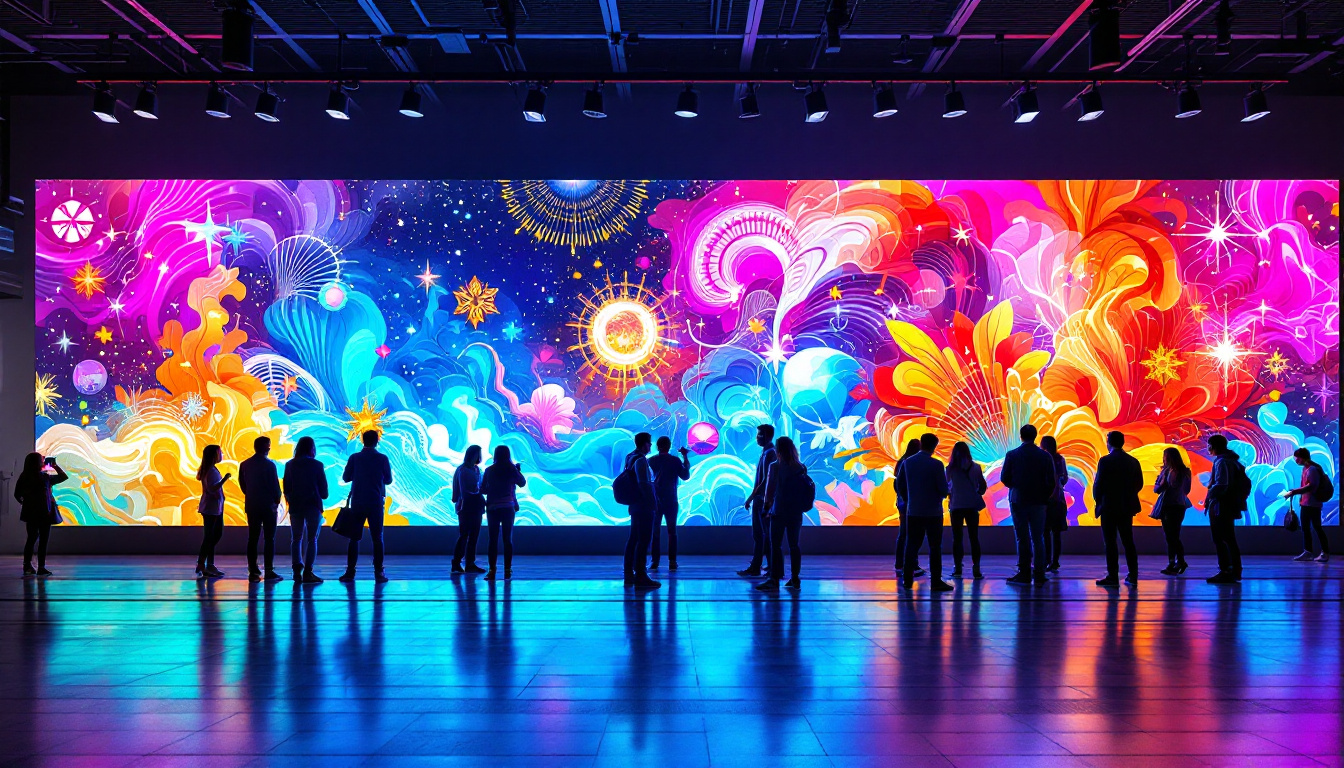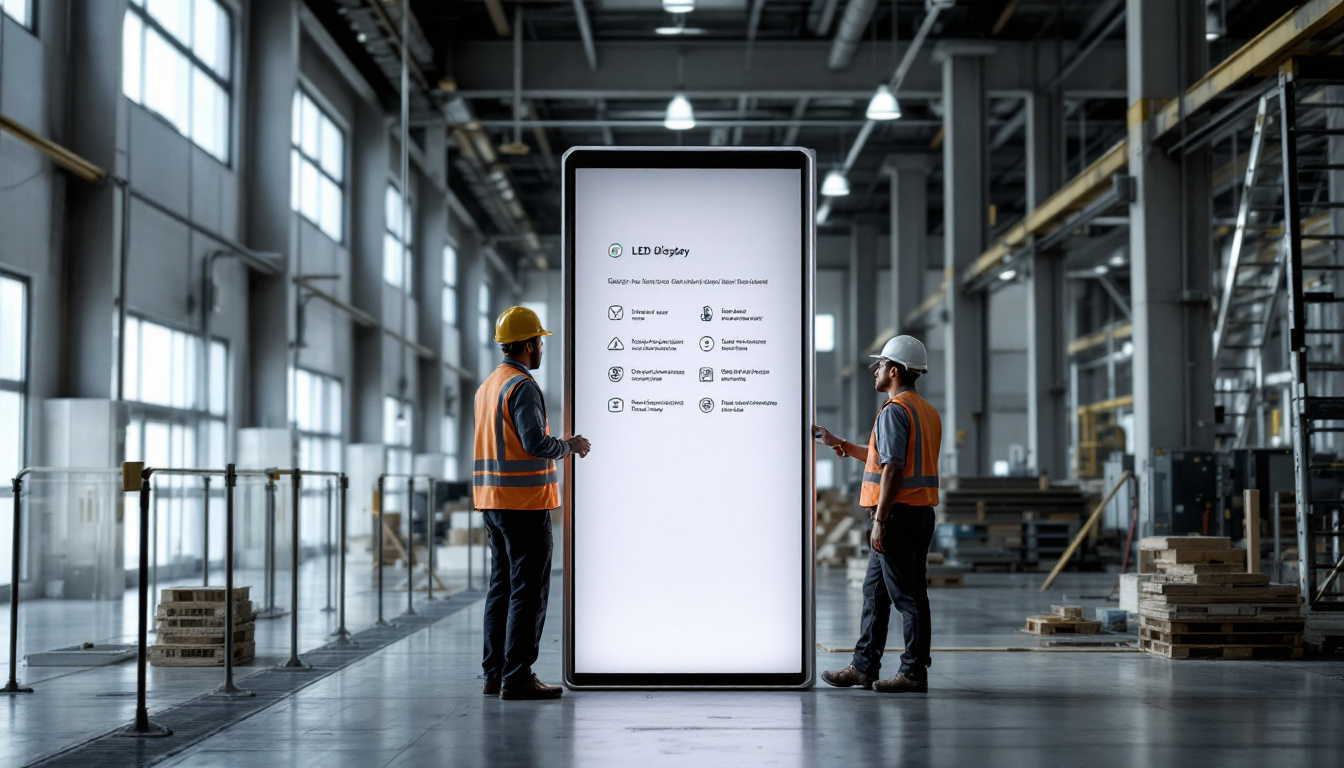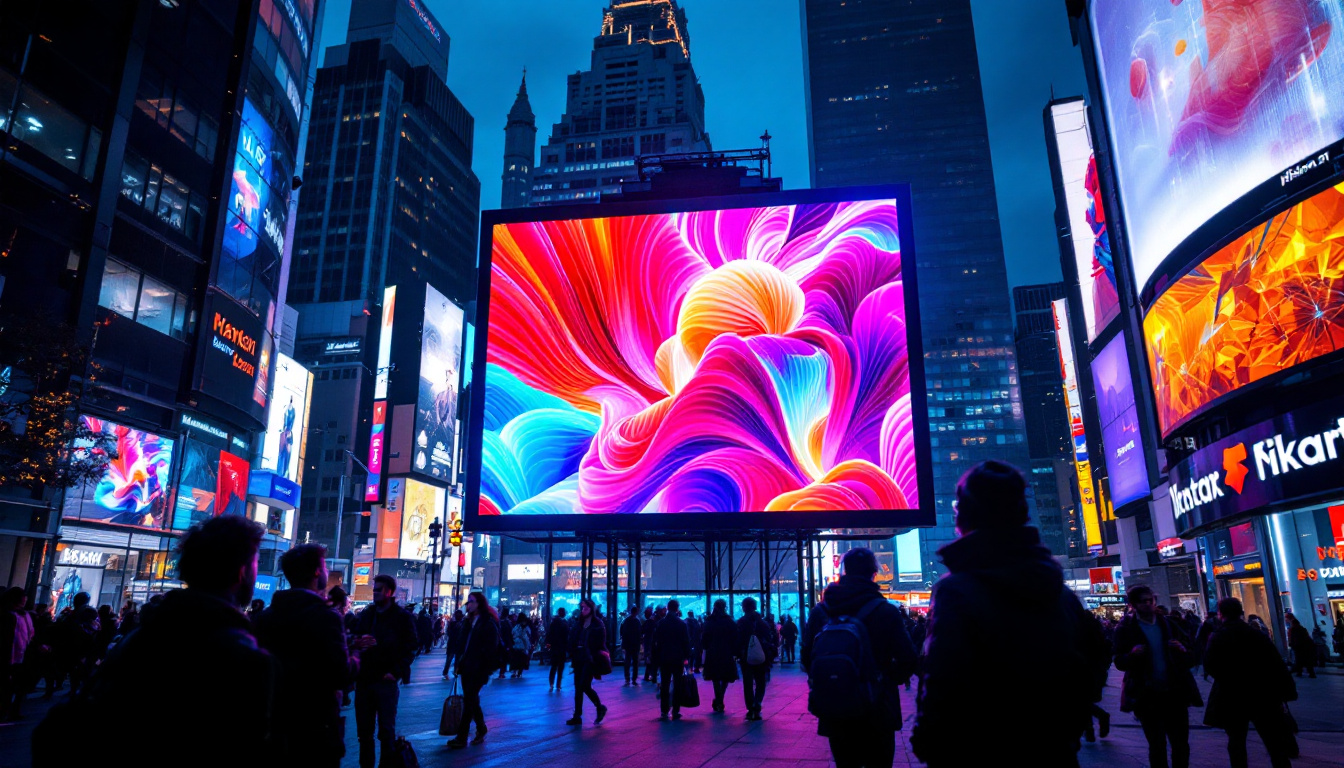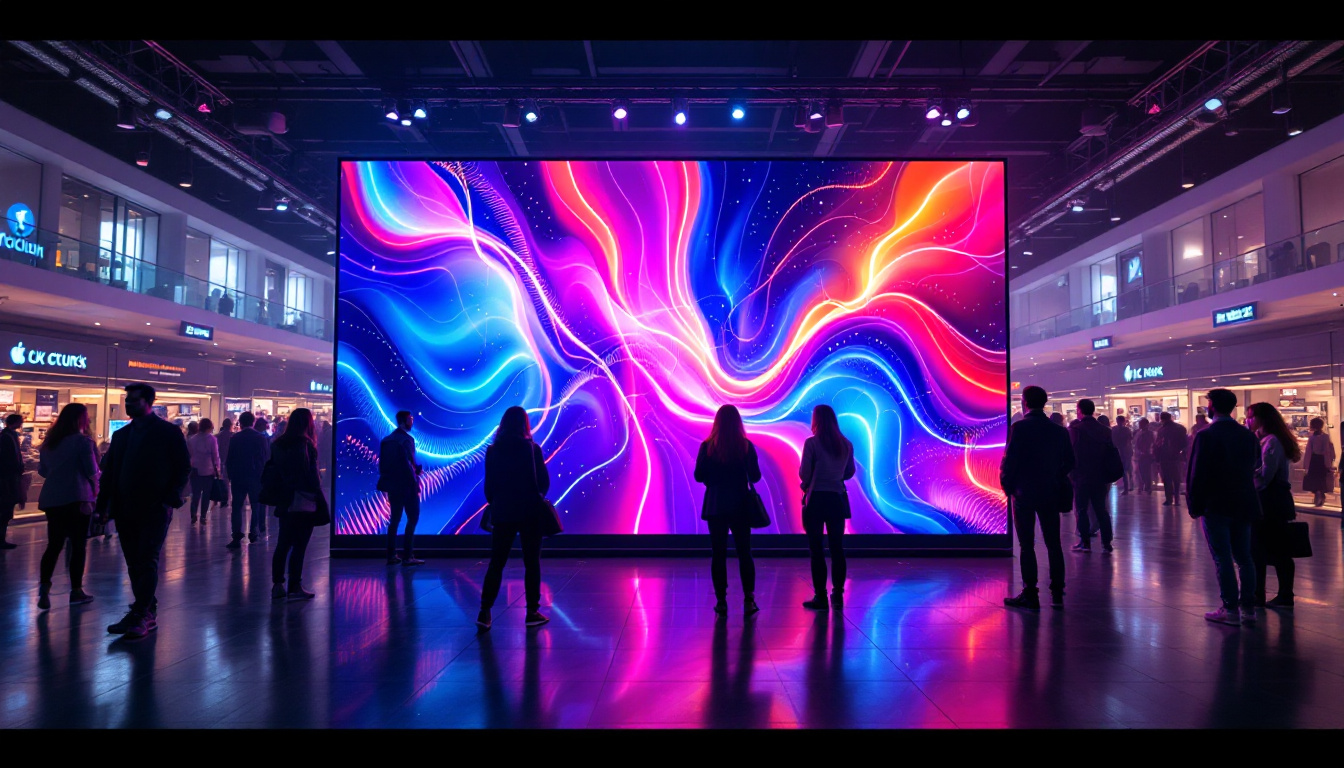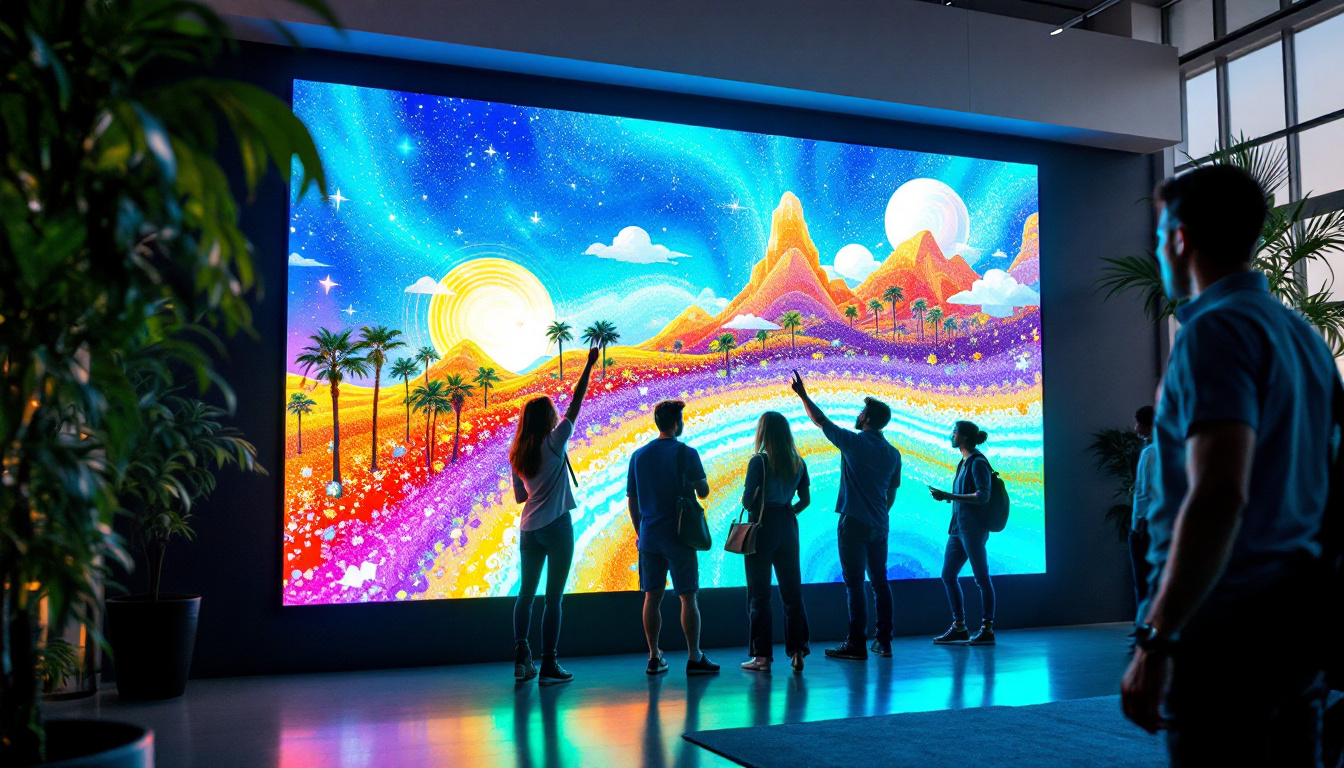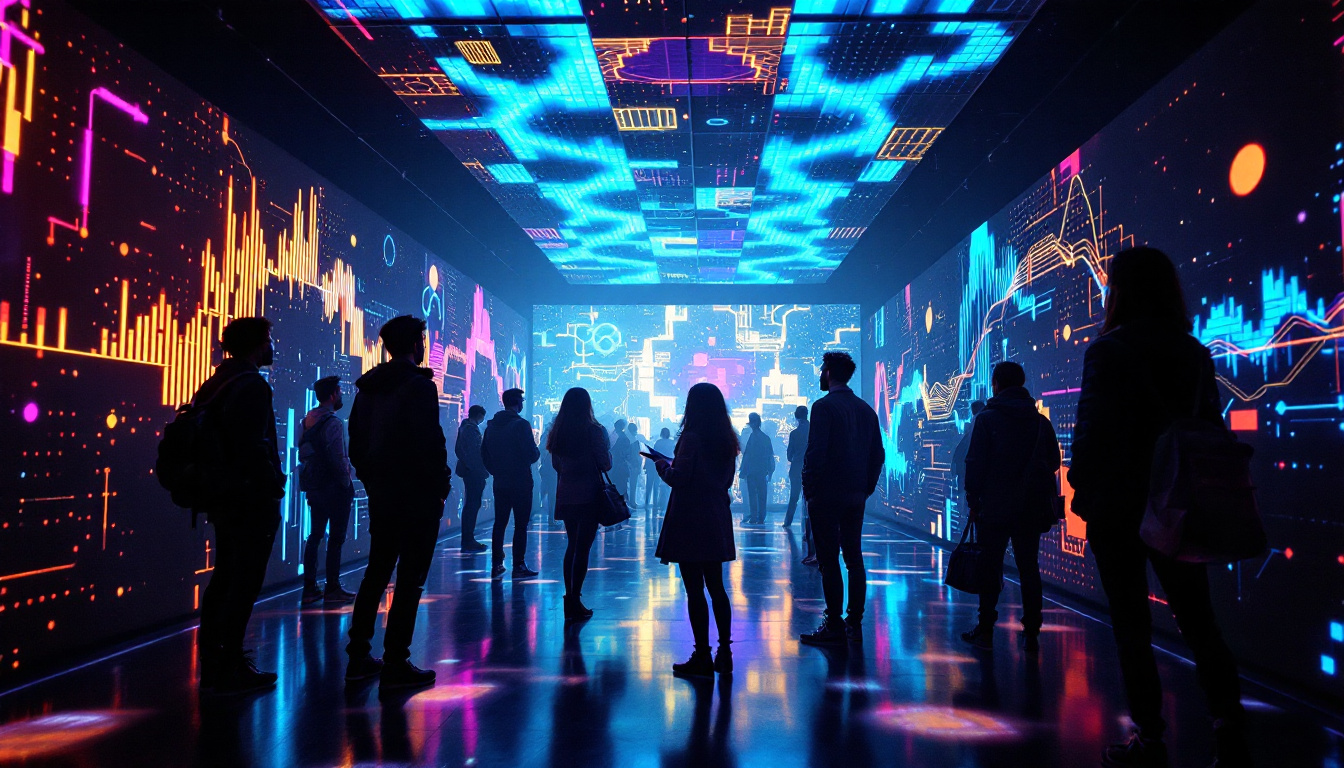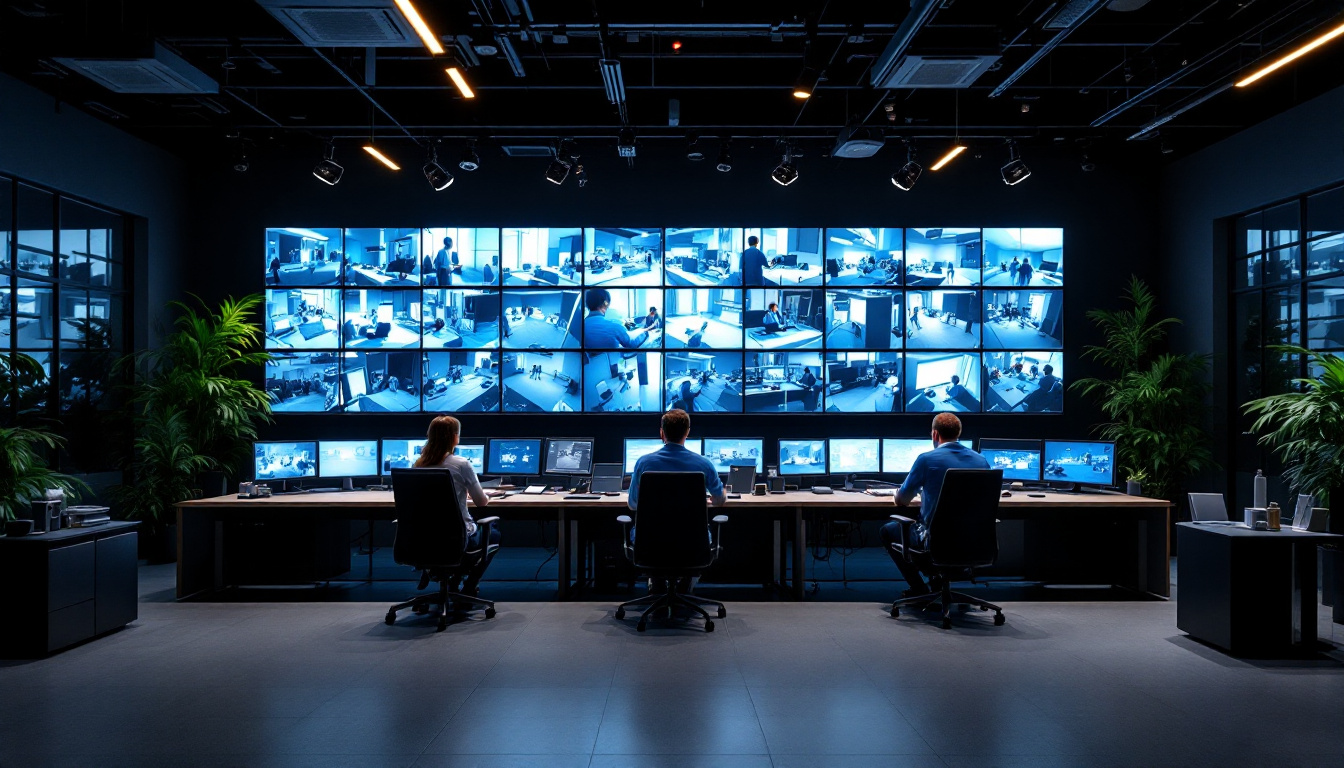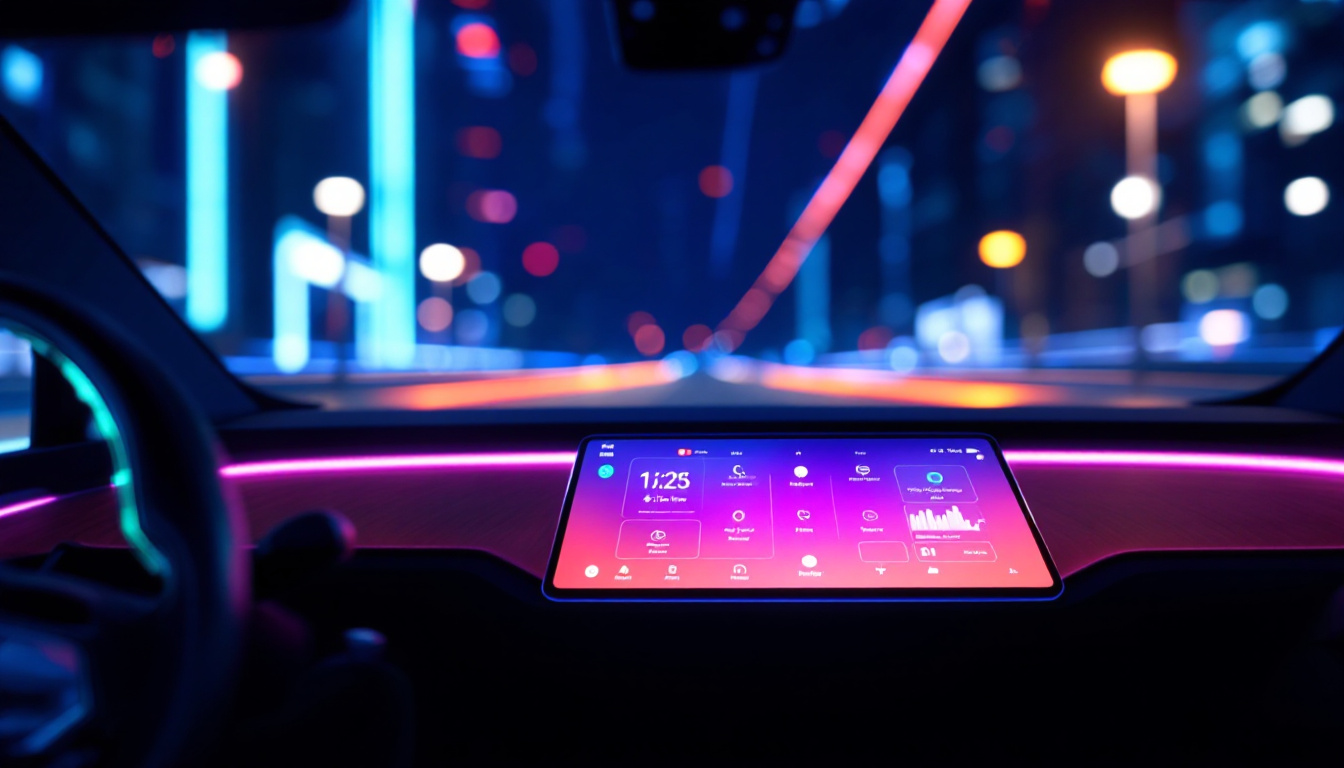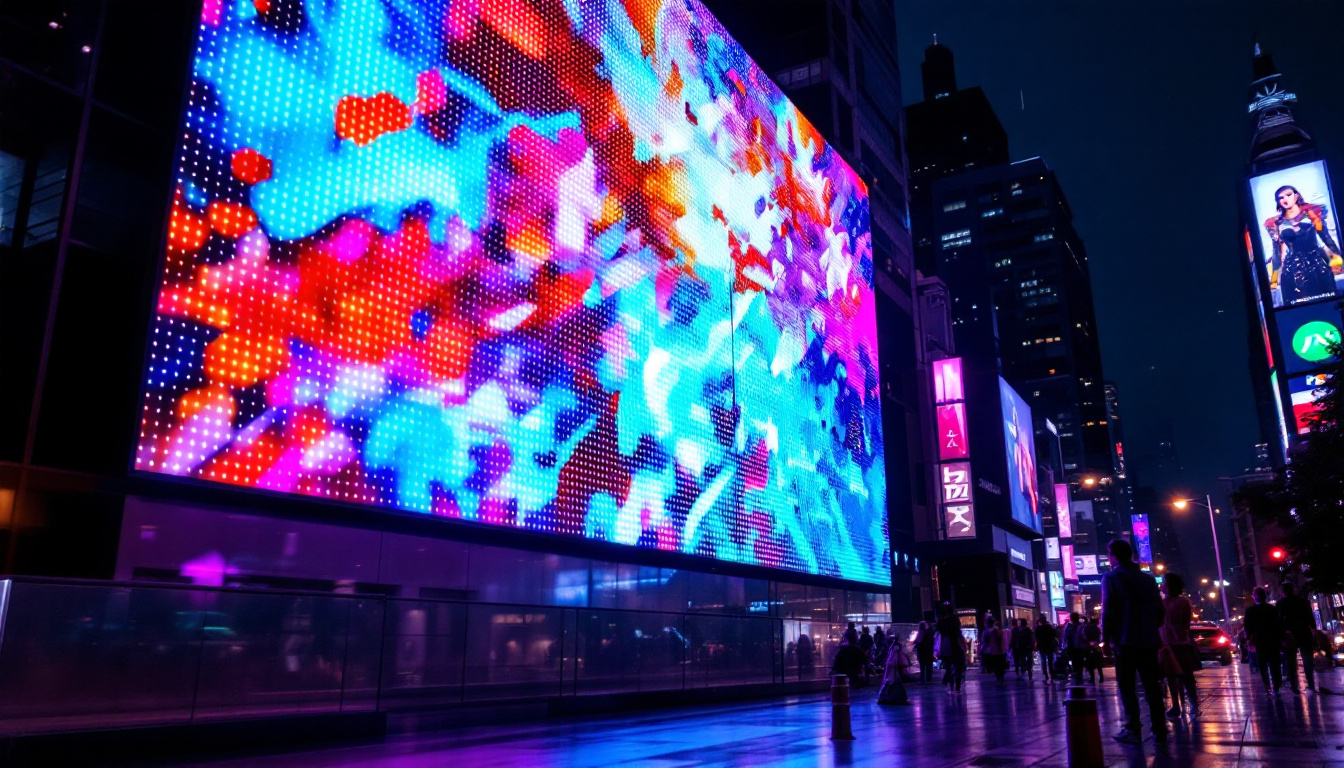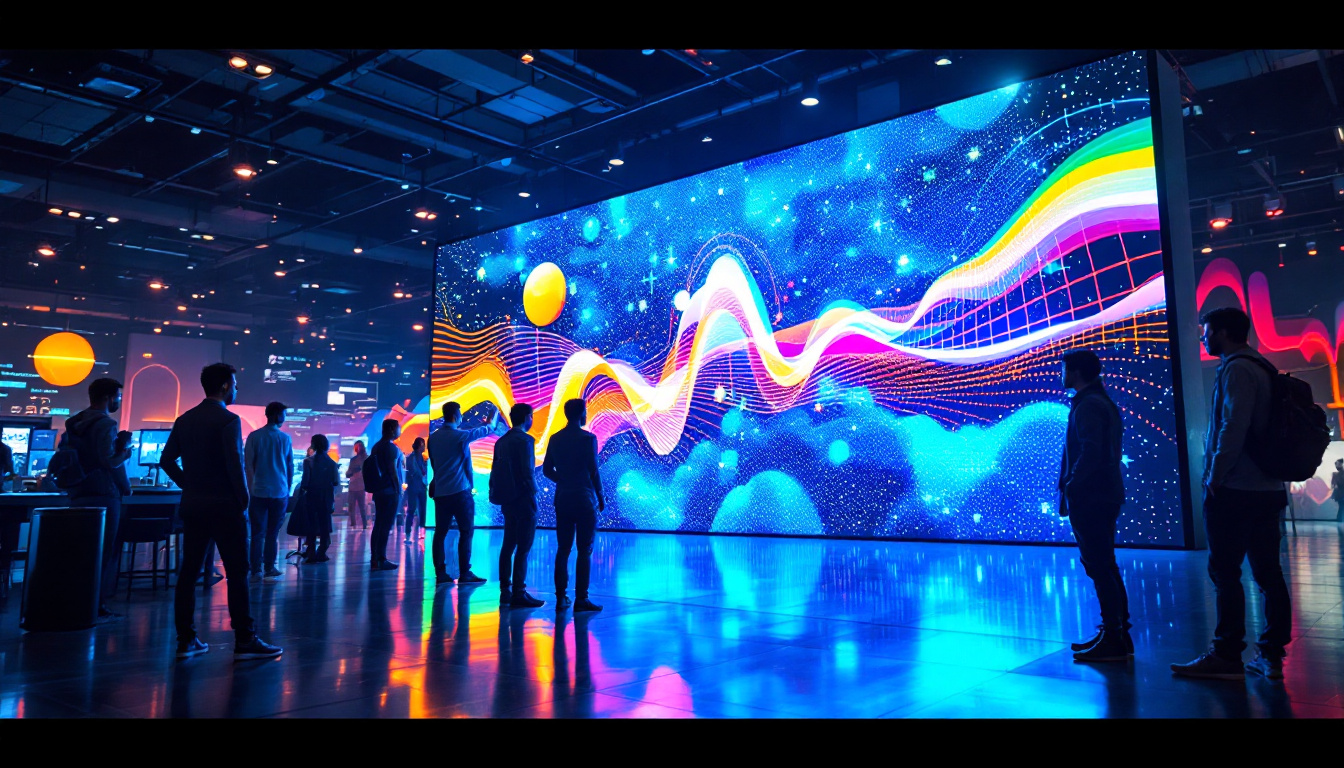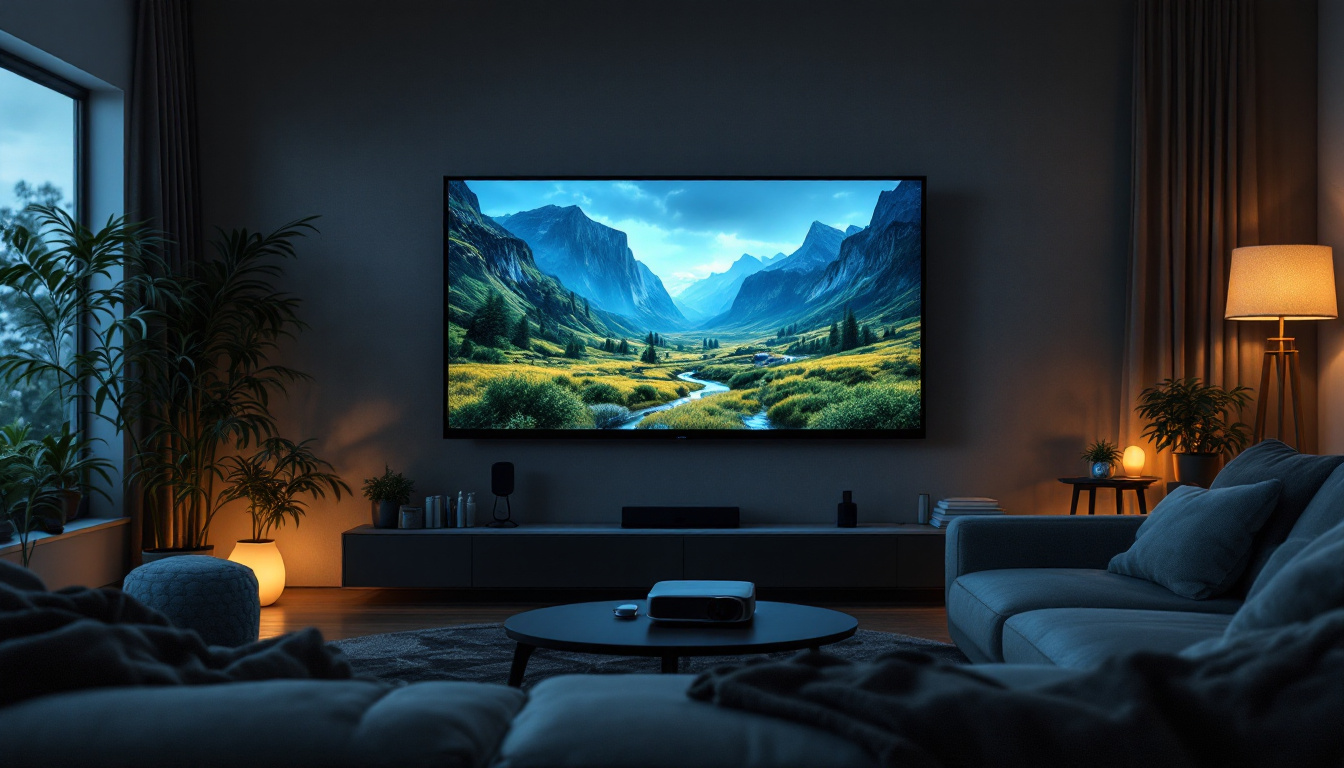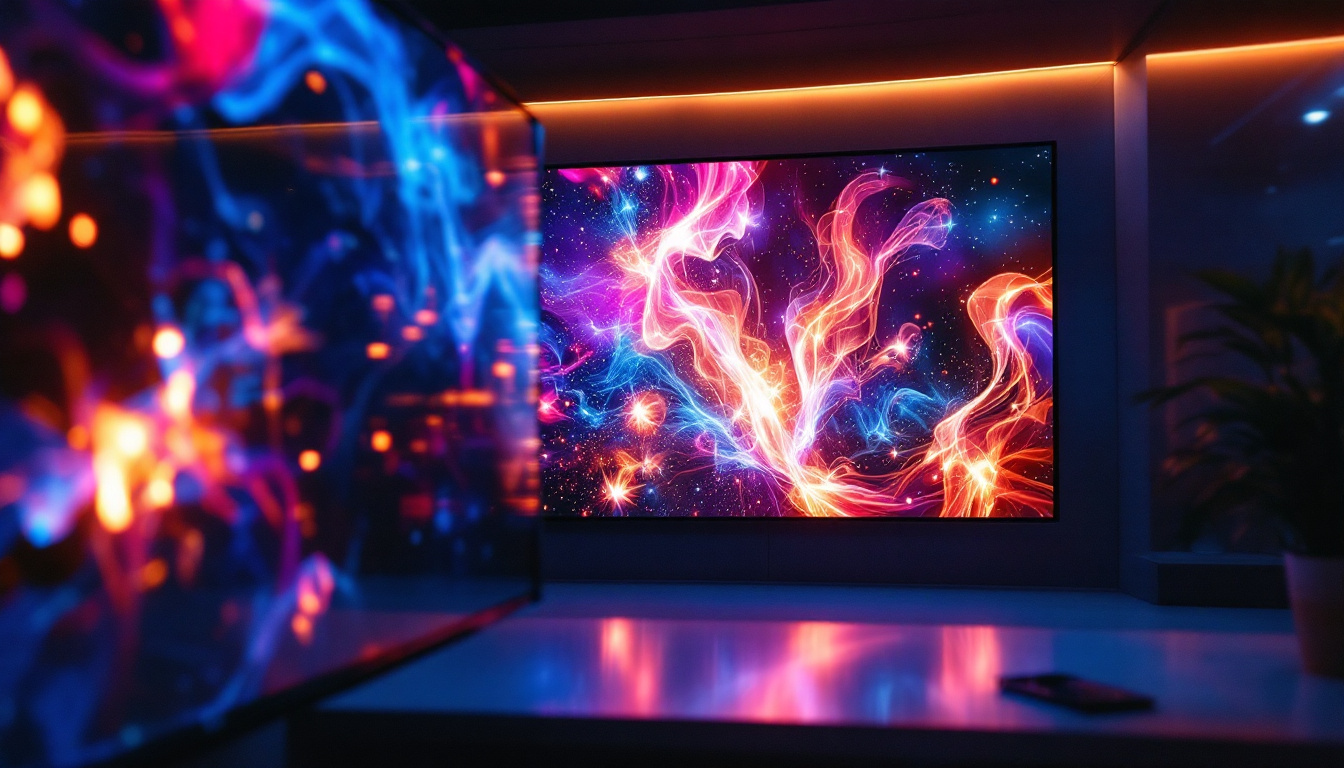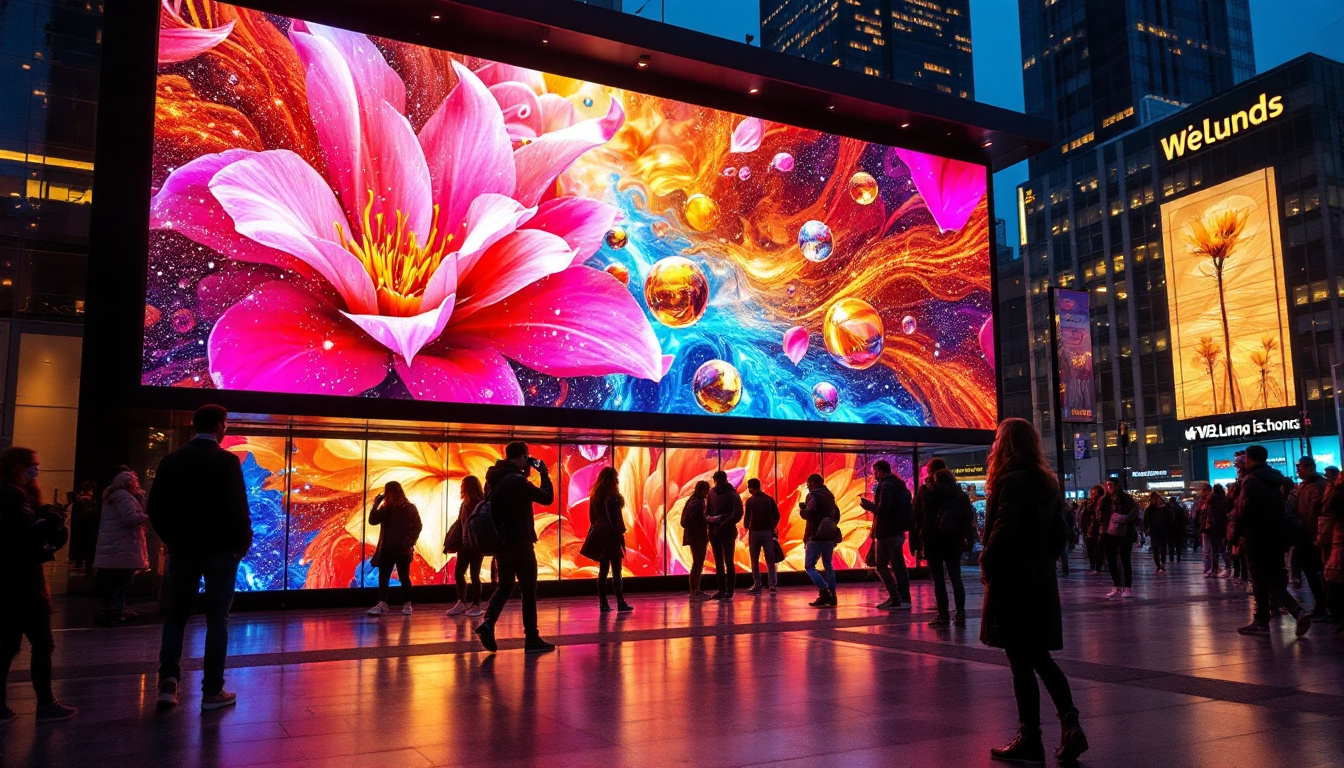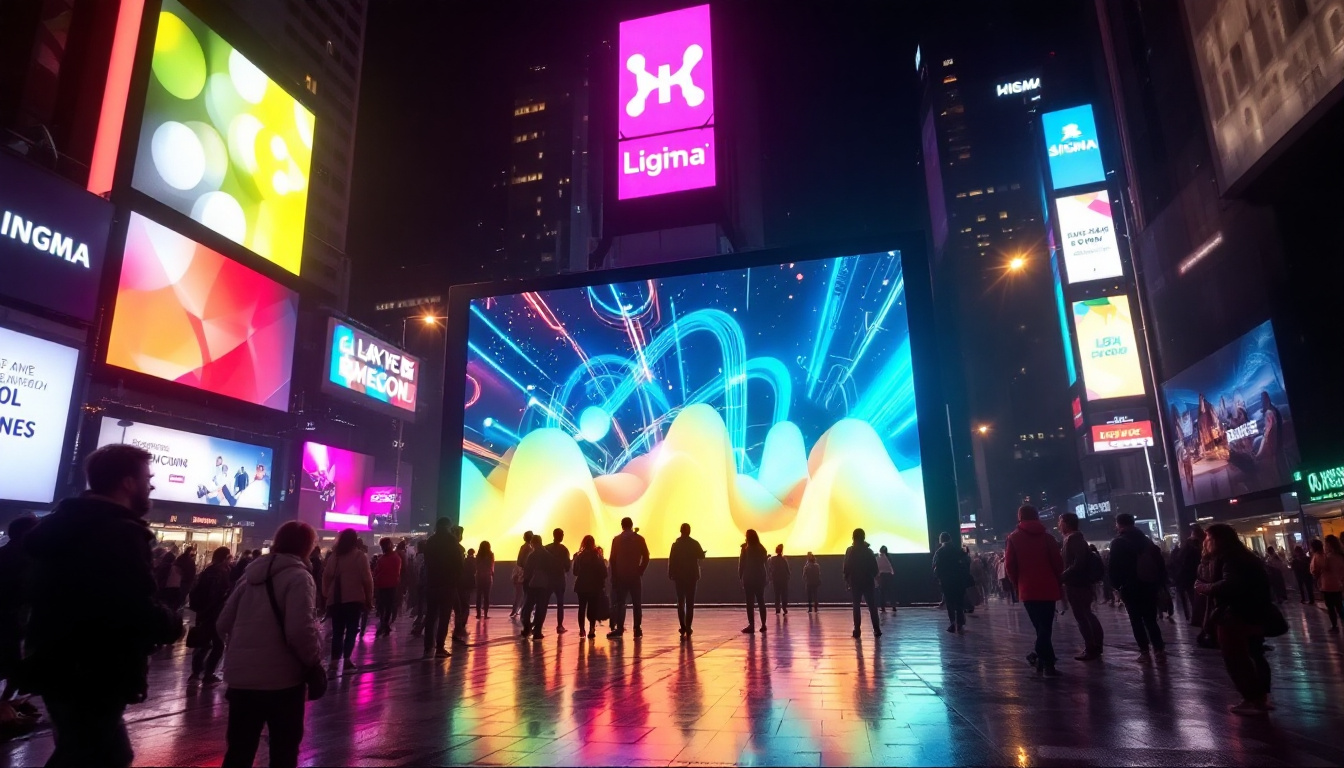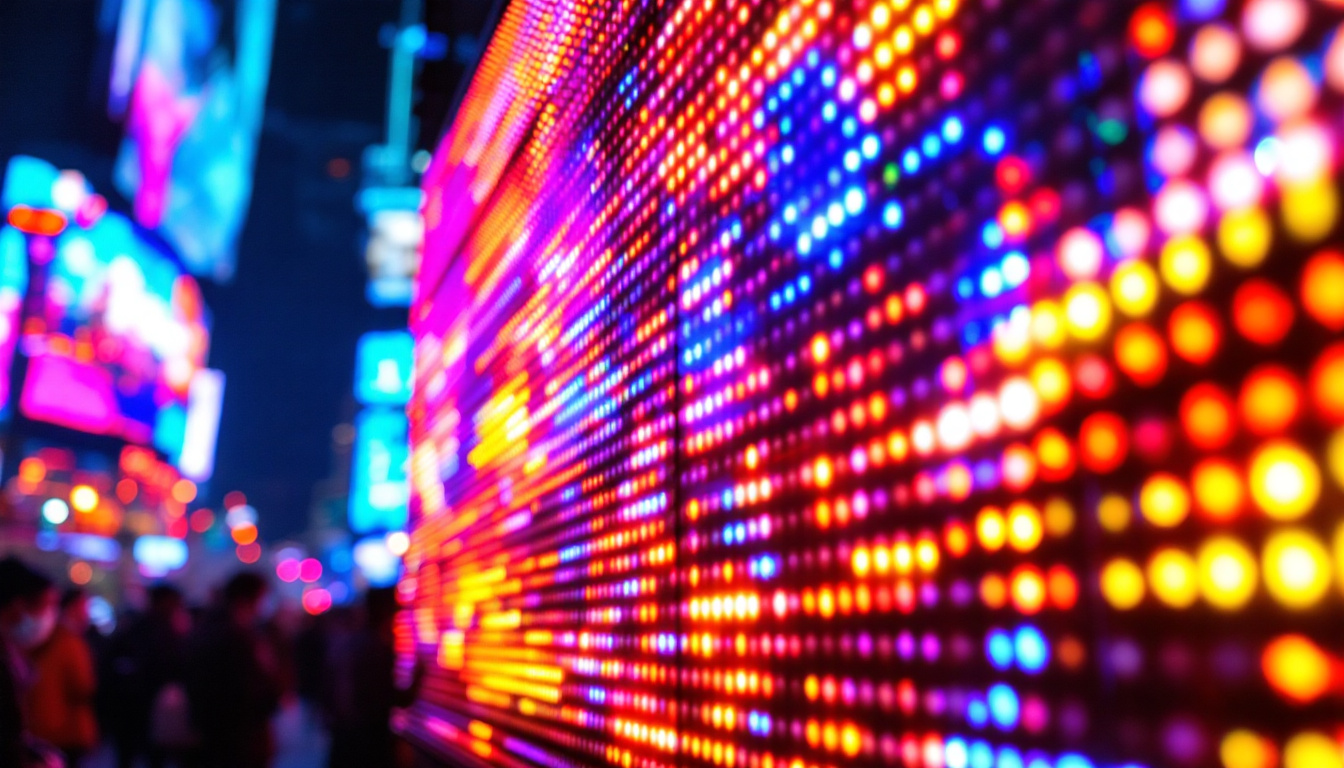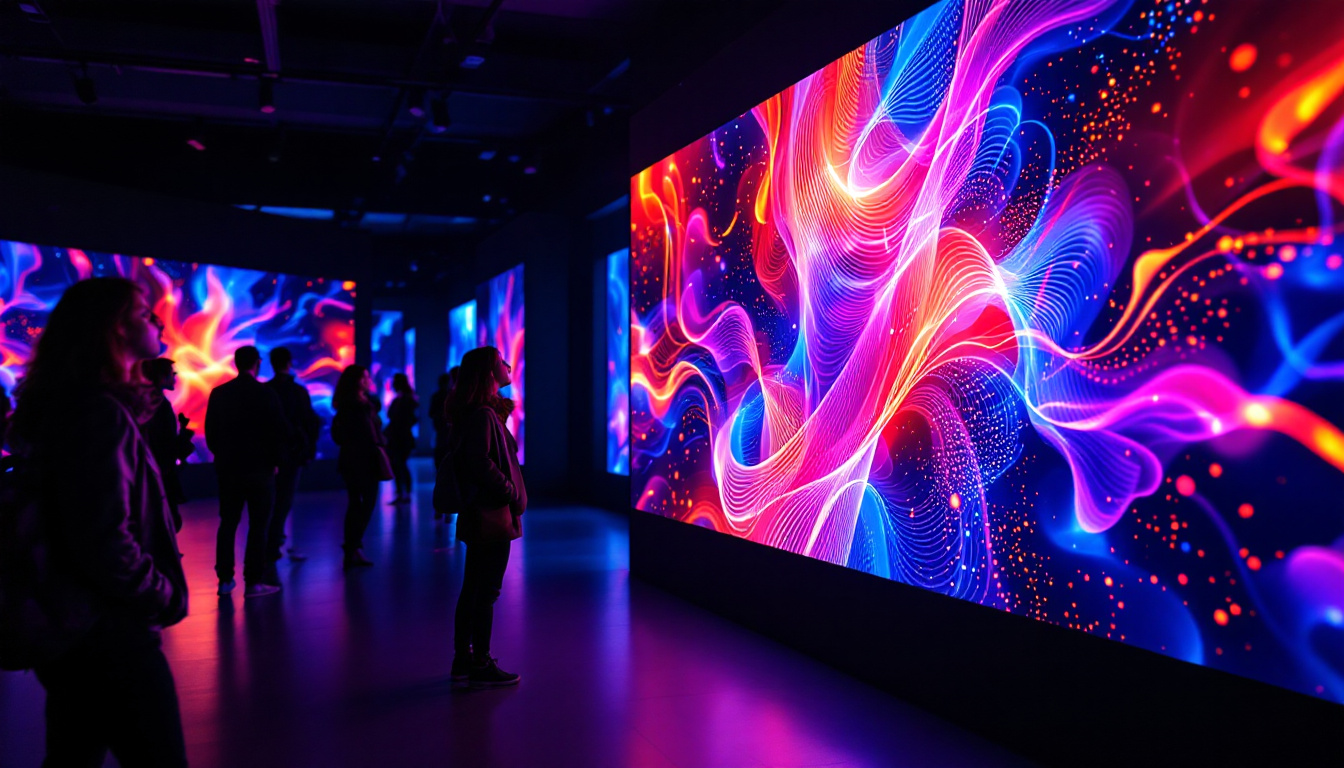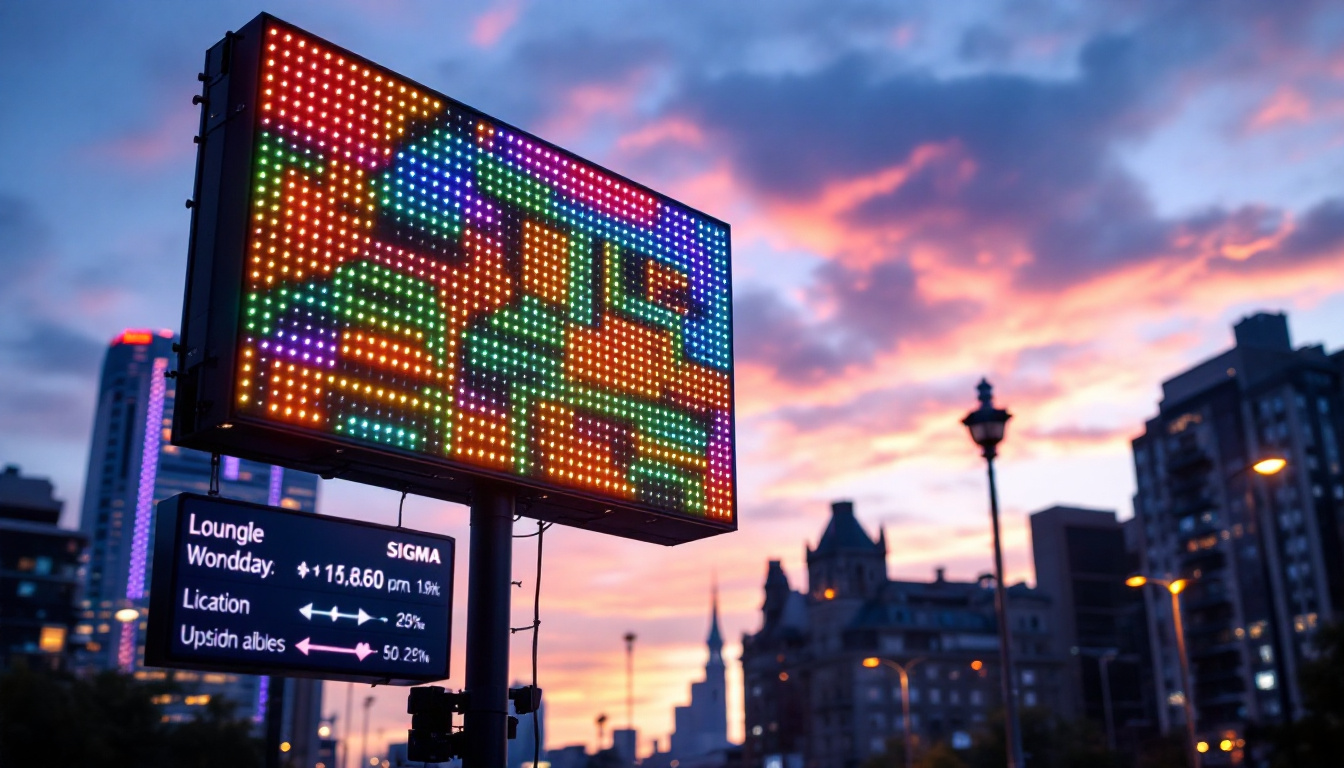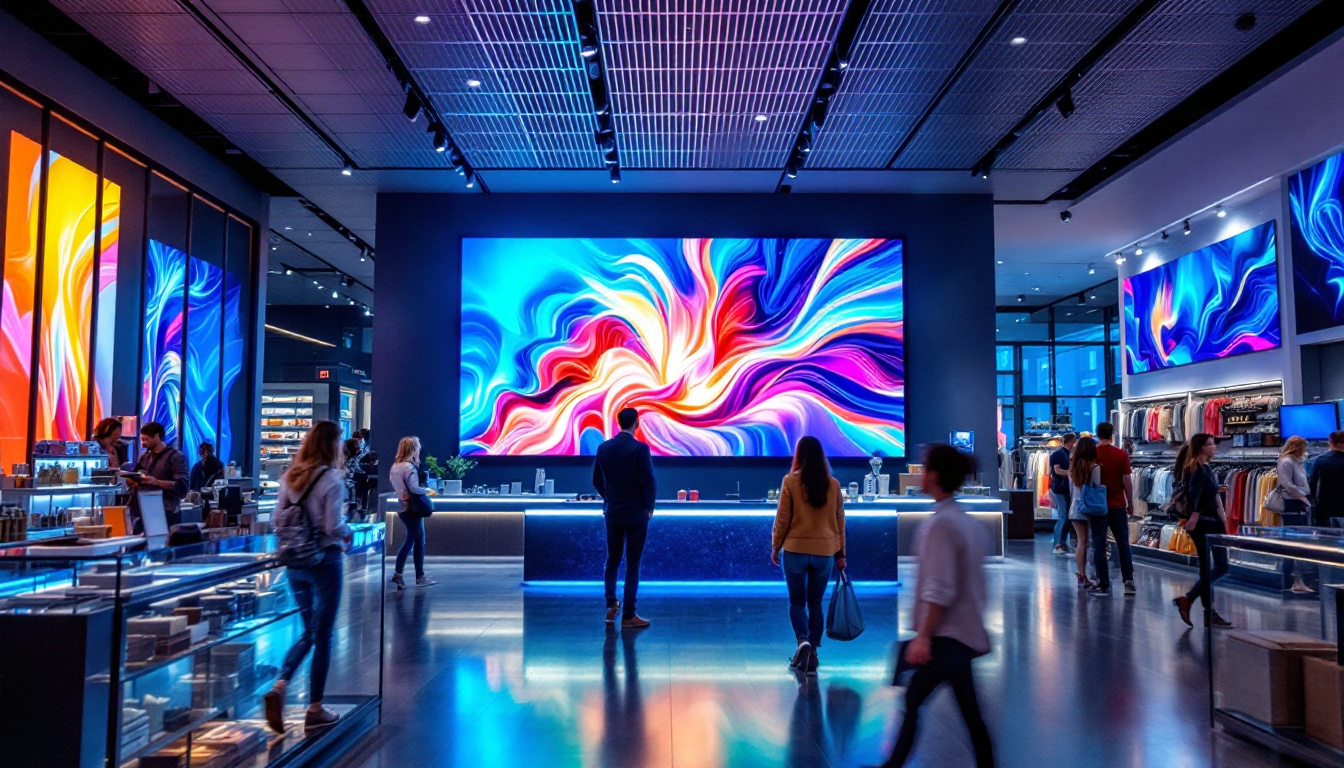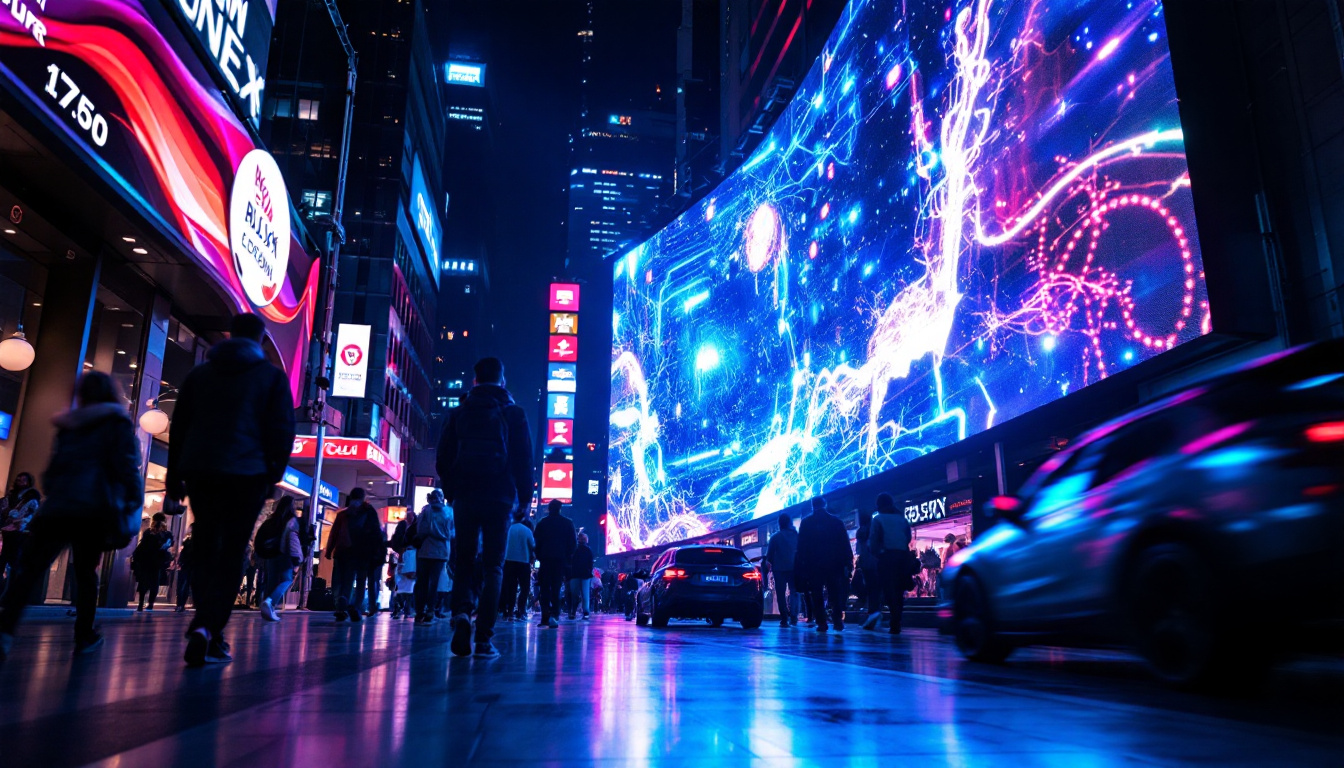The evolution of display technology has transformed the way information is presented and consumed. Among the various innovations, LED displays stand out as a versatile and dynamic solution for a multitude of applications. This article delves into the concept of ground wall LED displays, exploring their functionality, advantages, and the contexts in which they thrive.
Understanding Ground Wall LED Displays
Ground wall LED displays are large-scale visual communication tools that utilize light-emitting diodes (LEDs) to create vibrant, high-resolution images and videos. These displays are typically mounted on walls or structures, making them ideal for advertising, entertainment, and informational purposes. Their ability to capture attention and convey messages quickly has made them a staple in modern visual marketing strategies.
How They Work
At the core of ground wall LED displays are clusters of tiny LED lights that emit different colors when powered. These clusters are arranged in a grid format, allowing for the creation of complex images and animations. The technology behind these displays involves intricate circuitry and software that control the color and intensity of each LED, ensuring that the final output is both captivating and clear. Advanced technologies such as pixel mapping and real-time rendering further enhance the visual experience, allowing for seamless transitions and stunning graphics.
Ground wall displays can be categorized into two main types: indoor and outdoor. Indoor displays are designed for environments with controlled lighting, while outdoor displays are built to withstand various weather conditions and are often brighter to combat sunlight glare. Outdoor models also incorporate protective features such as waterproofing and UV resistance, ensuring longevity and durability in challenging environments.
Applications of Ground Wall LED Displays
The versatility of ground wall LED displays means they can be used in a wide array of settings. From retail environments to sports arenas, these displays serve multiple purposes:
- Advertising: Businesses leverage ground wall displays to showcase promotions, new products, and brand messages in high-traffic areas. The ability to update content in real-time allows companies to respond quickly to market trends and customer preferences.
- Entertainment: Concerts, festivals, and sporting events utilize these displays to enhance the audience experience with dynamic visuals. They can display live footage, interactive content, and even social media feeds, creating a more engaging atmosphere for attendees.
- Information Dissemination: Airports, train stations, and public spaces use LED displays to provide real-time updates and important announcements. These displays can also be programmed to show emergency information, ensuring public safety and awareness during critical situations.
Moreover, ground wall LED displays are increasingly being integrated with smart technologies, allowing for features such as audience analytics and targeted messaging. By analyzing viewer demographics and engagement levels, businesses can tailor their content to maximize impact and effectiveness. This shift towards data-driven advertising signifies a new era in how brands communicate with their audiences, making ground wall LED displays not just a visual tool, but a strategic asset in marketing campaigns.
Advantages of Ground Wall LED Displays
The adoption of ground wall LED displays offers numerous benefits, making them a preferred choice for many organizations. Here are some key advantages:
High Visibility
One of the most significant benefits of ground wall LED displays is their high visibility. The brightness of LED technology ensures that content remains clear and eye-catching, even in direct sunlight. This feature is particularly advantageous for outdoor advertising, where competition for attention is fierce. Moreover, the ability to adjust brightness levels allows for optimal visibility in various lighting conditions, ensuring that messages are effectively communicated at any time of day or night. This adaptability is crucial for events or promotions that require immediate engagement from passersby, enhancing the overall impact of marketing efforts.
Energy Efficiency
LED technology is known for its energy efficiency compared to traditional display technologies. Ground wall LED displays consume less power, resulting in lower operational costs over time. This efficiency not only benefits businesses financially but also contributes to environmental sustainability. In fact, many organizations are now prioritizing energy-efficient solutions as part of their corporate responsibility initiatives. By choosing LED displays, companies can significantly reduce their carbon footprint while promoting a greener image to their customers. Additionally, the long-term savings on energy bills can be redirected towards other important areas of the business, such as innovation or community engagement.
Durability and Longevity
Ground wall LED displays are built to last. They are resistant to harsh weather conditions, vibrations, and impacts, making them suitable for both indoor and outdoor use. Additionally, the lifespan of LED lights is significantly longer than that of traditional bulbs, reducing the frequency of replacements and maintenance. This durability translates into a lower total cost of ownership, as businesses can rely on their displays to perform consistently without the need for frequent repairs. Furthermore, the robust construction of these displays often includes protective features such as water resistance and UV protection, ensuring that the visual quality remains intact over time. This resilience not only enhances the return on investment but also instills confidence in businesses that their advertising will withstand the test of time and elements.
Installation Considerations
Installing a ground wall LED display requires careful planning and execution. Several factors must be considered to ensure optimal performance and longevity.
Location and Placement
The location of the display is crucial. It should be positioned in a way that maximizes visibility while minimizing obstructions. Factors such as foot traffic, viewing angles, and surrounding lighting conditions should all be taken into account. For instance, a display placed near a busy entrance can attract more attention, but it must also be shielded from direct sunlight to prevent glare, which could hinder visibility. Additionally, considering the height at which the display is mounted can greatly affect the audience’s engagement; displays that are too high or too low may not be viewed comfortably. It’s also beneficial to analyze the typical flow of pedestrian traffic to determine the most effective angle for viewing.
Structural Support
Given their size and weight, ground wall LED displays require adequate structural support. This may involve reinforcing walls or using specialized mounting systems to ensure stability and safety. Professional installation is often recommended to address these technical considerations. Furthermore, it’s important to assess the existing infrastructure to ensure it can handle the additional load. For example, older buildings may require significant upgrades to support the weight of modern LED technology. Additionally, considerations for weather resistance are essential, especially in outdoor settings where displays may be exposed to rain, wind, or extreme temperatures. Proper sealing and protective measures can enhance the display’s durability, ensuring it remains functional and visually appealing over time.
Content Management for Ground Wall Displays
Creating engaging content is essential for maximizing the impact of ground wall LED displays. Effective content management involves not only the design of visuals but also the strategy behind their deployment.
Designing Engaging Visuals
The design of content for LED displays should prioritize clarity and impact. High-resolution images, bold typography, and vibrant colors can draw attention and convey messages effectively. Additionally, animations and video content can enhance viewer engagement, making the display more dynamic.
Content Scheduling and Updates
Content management systems (CMS) play a vital role in the operation of ground wall LED displays. These systems allow users to schedule content updates, ensuring that the display remains fresh and relevant. Timely updates can be particularly important in fast-paced environments like retail or event venues.
Challenges and Considerations
Despite their many advantages, ground wall LED displays are not without challenges. Understanding these challenges can help organizations make informed decisions.
Initial Investment
The upfront cost of purchasing and installing a ground wall LED display can be significant. Organizations must weigh this initial investment against the long-term benefits and potential return on investment. Careful budgeting and financial planning are essential to ensure that the display aligns with overall business goals.
Maintenance Requirements
While LED displays are generally low-maintenance, they do require periodic checks and upkeep to ensure optimal performance. This may include cleaning the display surface, checking for pixel malfunctions, and updating software. Organizations should factor in these maintenance needs when planning their display strategy.
The Future of Ground Wall LED Displays
The landscape of display technology is continuously evolving, and ground wall LED displays are no exception. As advancements in technology occur, several trends are emerging that could shape the future of these displays.
Integration with Smart Technology
With the rise of smart technology, ground wall LED displays are increasingly being integrated with IoT (Internet of Things) devices. This integration allows for real-time data sharing and interactive content, enhancing the viewer experience. For instance, displays can respond to audience engagement or environmental conditions, creating a more personalized interaction.
Enhanced Resolution and Quality
As technology advances, the resolution and quality of LED displays continue to improve. Higher pixel densities and enhanced color accuracy are making displays more lifelike and immersive. This trend is particularly relevant for applications in entertainment and advertising, where visual quality is paramount.
Conclusion
Ground wall LED displays represent a significant advancement in visual communication technology. Their versatility, energy efficiency, and high visibility make them an attractive option for a wide range of applications. While there are challenges to consider, the benefits often outweigh the drawbacks, particularly in terms of engagement and impact.
As technology continues to evolve, the future of ground wall LED displays looks promising. Organizations that embrace this technology can enhance their communication strategies, captivate audiences, and ultimately drive success in their respective fields.
Illuminate Your Space with LumenMatrix
Ready to elevate your visual communication and captivate your audience with unparalleled clarity? Discover LumenMatrix’s full spectrum of innovative LED display solutions, from the vibrant Indoor LED Wall Display to the robust Outdoor LED Wall Display, and beyond. Whether you’re looking to create an immersive experience with a Floor LED Display or make a mobile impact with a Vehicle LED Display, LumenMatrix has the cutting-edge technology to bring your vision to life. Embrace the future of digital signage with our Custom LED Displays, All-in-One LED Displays, and LED Transparent Displays. Check out LumenMatrix LED Display Solutions today and transform your space into a dynamic visual masterpiece.

